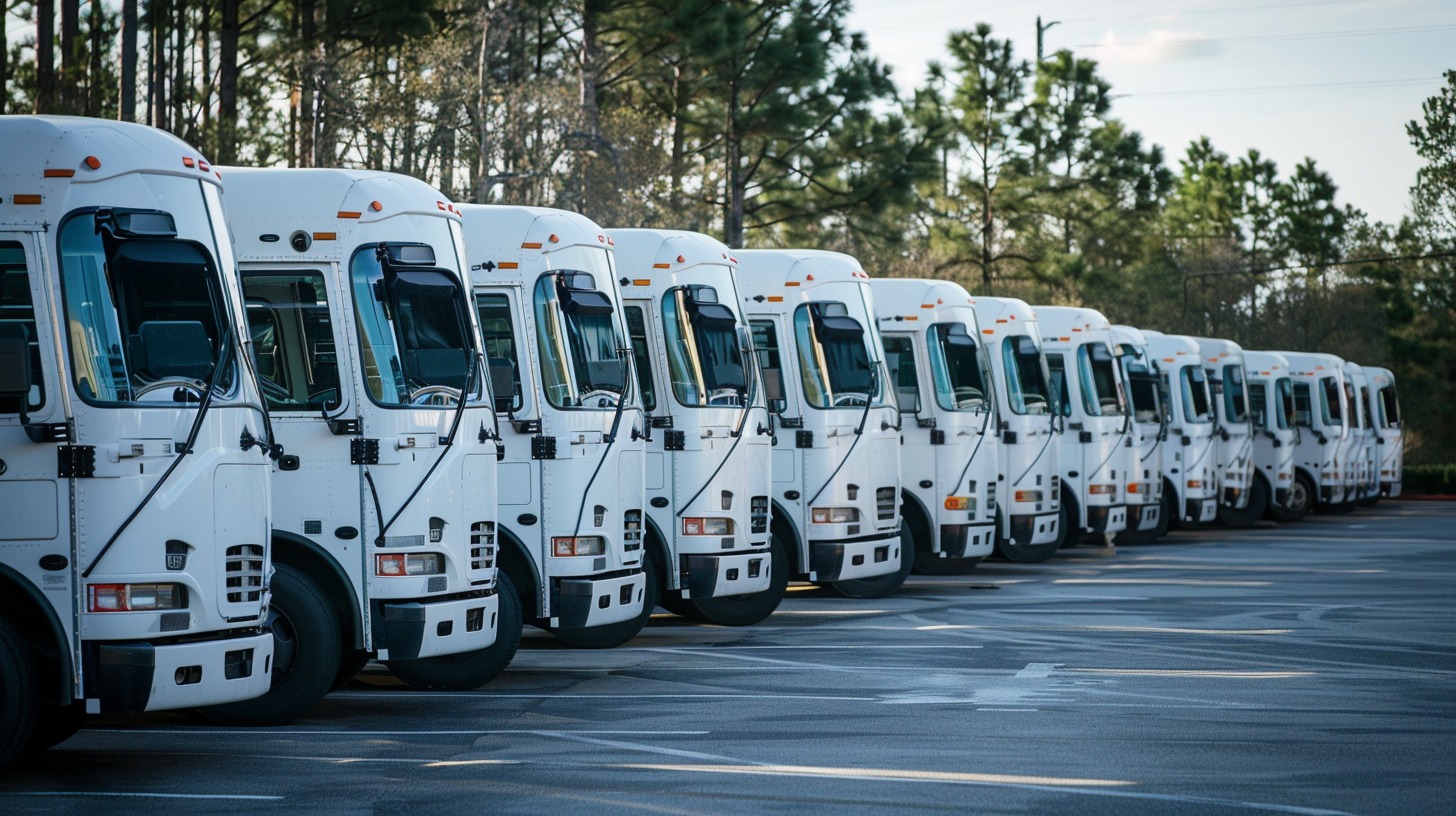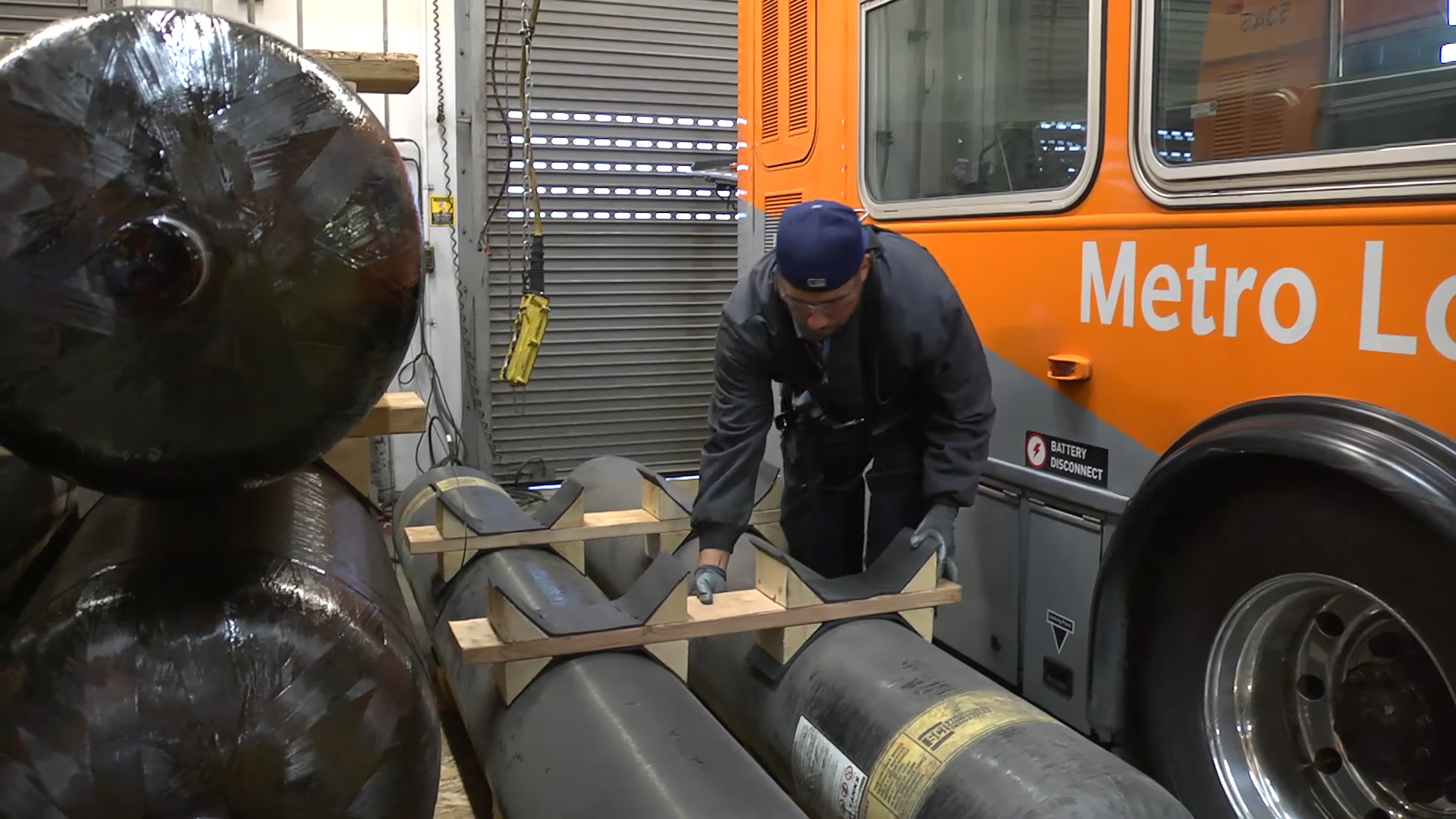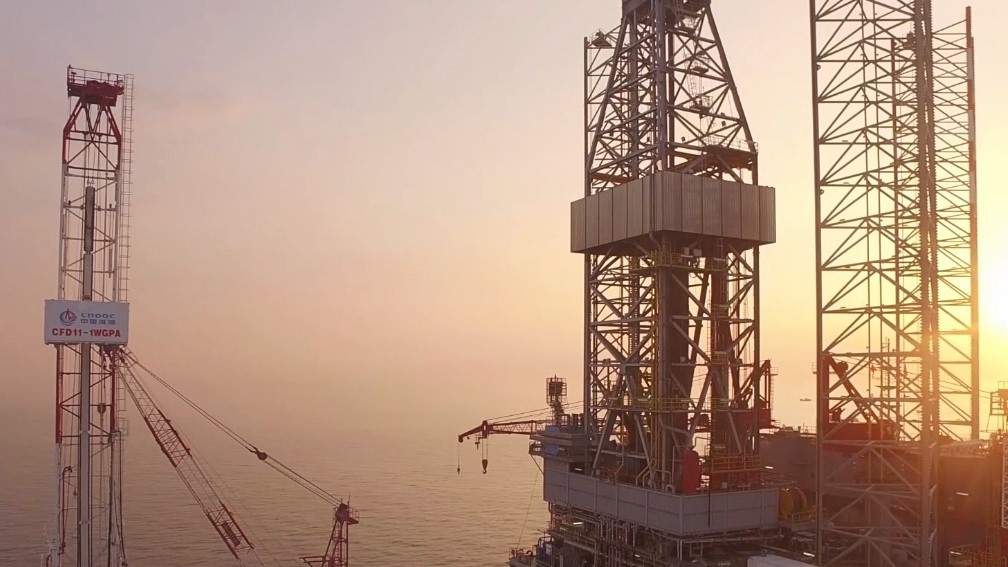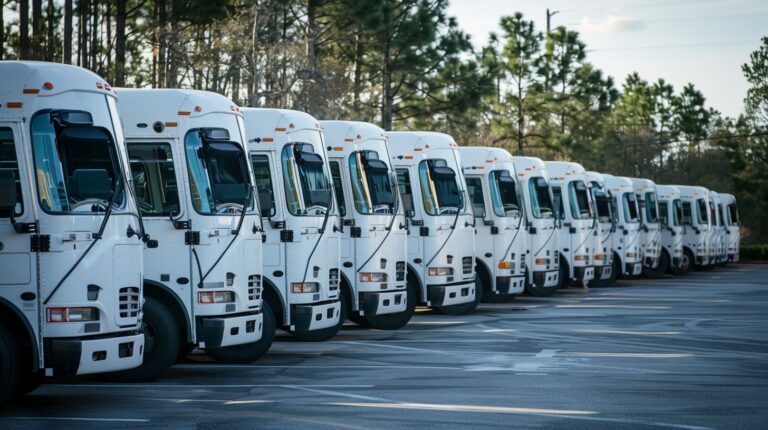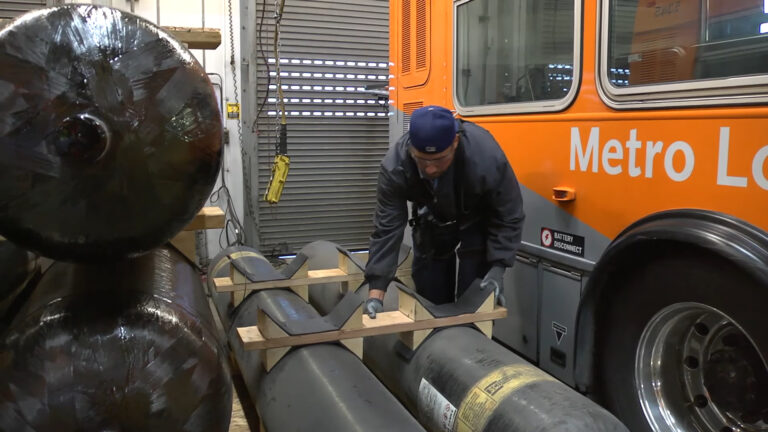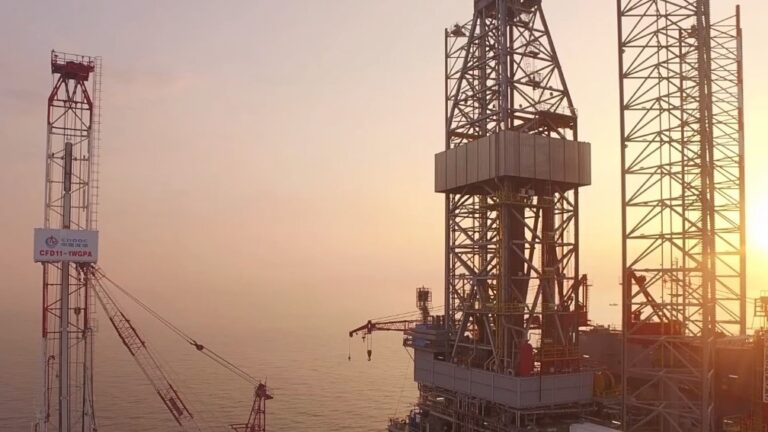Compressed Natural Gas, commonly known by its acronym CNG, is reshaping the landscape of fuel used for transportation.
It’s a less commonly discussed alternative to traditional gasoline and diesel, yet it holds significant promise for a more sustainable future.
With a lower environmental impact and cost-effective operation, CNG is a topic that warrants close attention.
What is it Exactly?
CNG stands for Compressed Natural Gas, which is predominantly composed of methane gas. It is compressed to a volume that is less than 1% of its original size at standard atmospheric pressure.
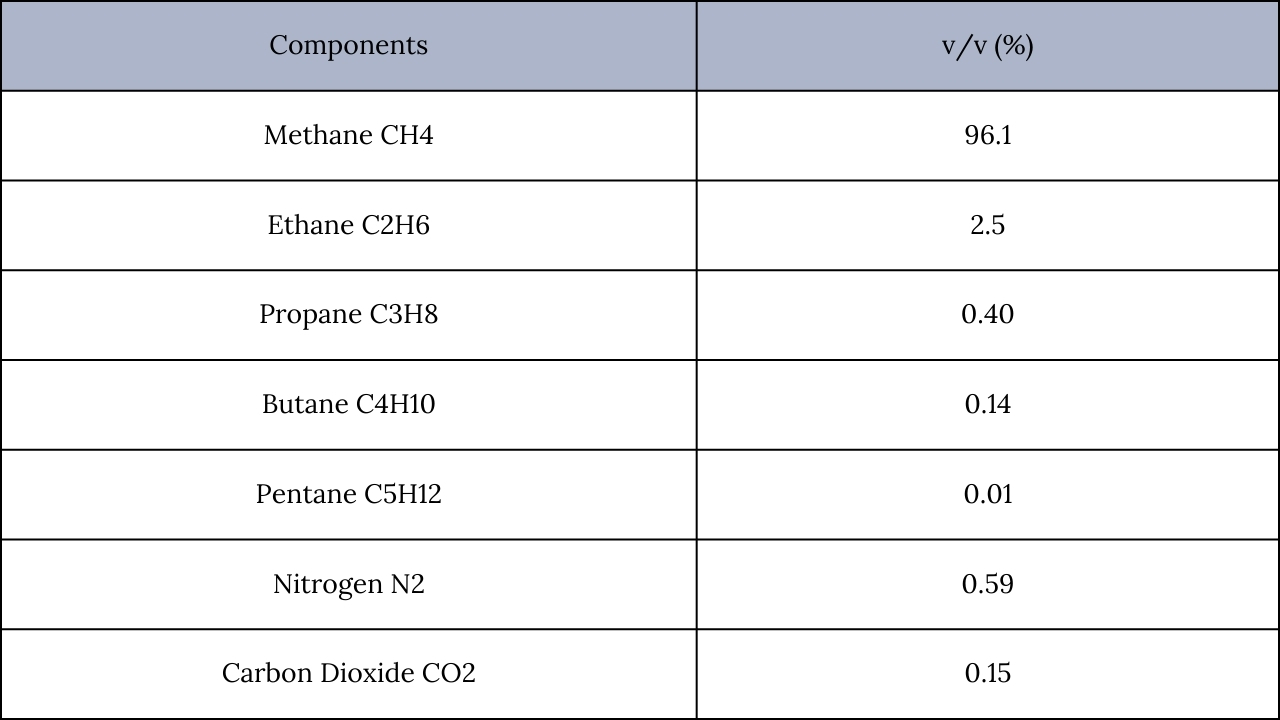
As a fuel, it is used as an alternative to traditional fuels such as gasoline, diesel, or propane/LPG. One of the main advantages is that it produces fewer undesirable emissions when burned, making it a more environmentally friendly option.
CNG is stored and transported in sturdy containers that can withstand pressures of 20–25 MPa (about 200-250 times atmospheric pressure). The gas must be stored under high pressure to maintain its compressed state, enabling more energy to be stored in a smaller volume.
Vehicles powered by CNG include those originally designed for gasoline use but have been converted to run on it, as well as those specifically manufactured for CNG use. The modification typically involves adapting the fuel system to handle high-pressure gas rather than liquid fuel.
It is also considered safer than other fuels in case of a spill. Since it is lighter than air, it disperses quickly if released, reducing the risk of fire or explosion compared to heavier hydrocarbon fuels that can pool on the ground and create a fire hazard.
It is a compressed form of methane that serves as a cleaner, safer alternative to conventional fossil fuels, utilized in specially adapted or designed vehicles. Its properties allow for efficient storage and use while also offering safety advantages in the event of accidental release.
The Advantages Over Traditional Fuels
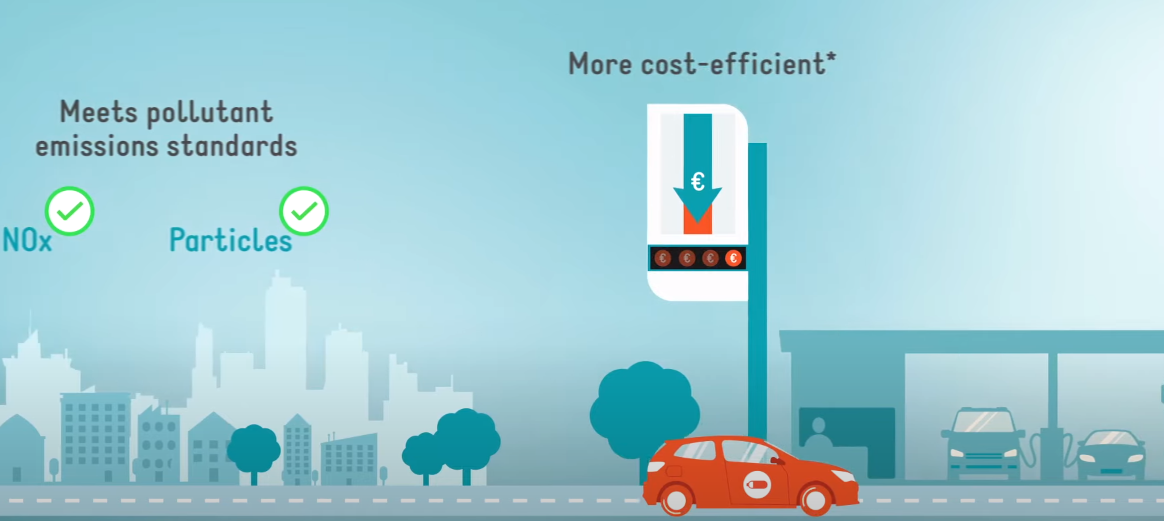
There are several compelling reasons for the growing interest in compressed natural gas. Here are the most important ones:
| Advantage | Details |
|---|---|
| Environmental Benefits | Lowers emissions of CO2, NOx, and particulate matter, enhancing air quality. |
| Cost-Effectiveness | Generally cheaper than gasoline or diesel, especially beneficial for high-mileage vehicles. |
| Energy Security | Reduces reliance on imported oil, boosting national energy security. |
| Safety | Safer due to higher ignition temperature; quick dispersion minimizes fire risks. |
| Vehicle Longevity and Maintenance | Extends engine life and reduces maintenance needs due to less wear and tear. |
| Tax Incentives and Rebates | Offers financial incentives to offset CNG vehicle adoption costs. |
| Reduced Noise Pollution | Quieter operation reduces urban noise pollution. |
How It Is Utilized in Vehicles
Vehicles that use Compressed Natural Gas are either dedicated (exclusively use natural gas) or bifuel (can switch between CNG and gasoline).
To facilitate its use, vehicles are equipped with specially designed high-pressure fuel tanks.
- The engine is either specifically designed for CNG or a converted gasoline engine.
- Fueling infrastructure is different than for liquid fuels, requiring specialized filling stations.
- Vehicle maintenance can be less expensive over time, as it burns cleaner than gasoline or diesel.
Production and Distribution
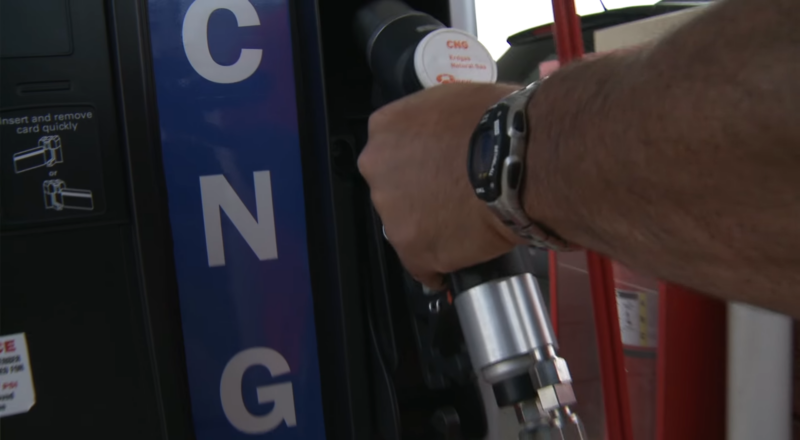
Sourcing and Compression
CNG is sourced from natural gas wells or in conjunction with crude oil production. This gas is then processed to remove impurities and water to meet the standards required for use in vehicles.
Extraction
The initial step in the production of CNG is the extraction of natural gas.
This process involves drilling into underground reservoirs to access natural gas deposits, which can exist independently or in conjunction with oil.
In cases where natural gas is found with oil, it is often referred to as “associated gas.”
The extraction process requires sophisticated drilling technology and expertise to safely and efficiently tap into these gas reserves.
Processing
Once extracted, the raw natural gas must undergo a thorough processing procedure to remove various impurities that could hinder its performance as a fuel.
These impurities include water vapor, hydrogen sulfide, carbon dioxide, and other substances that could be corrosive or reduce the energy efficiency of the gas.
The processing plants use a series of techniques such as dehydration, sweetening (to remove sulfur compounds), and separation of natural gas liquids to prepare the gas to meet specific quality standards required for vehicular fuel.
Compression
After processing, the natural gas is compressed, which involves increasing its pressure to about 3,000 pounds per square inch (psi).
The compression is necessary to reduce the volume of the gas, allowing for more efficient storage and transport.
The process is carried out using heavy-duty compressors that can handle the high pressures required without leakage or failure.
Storage
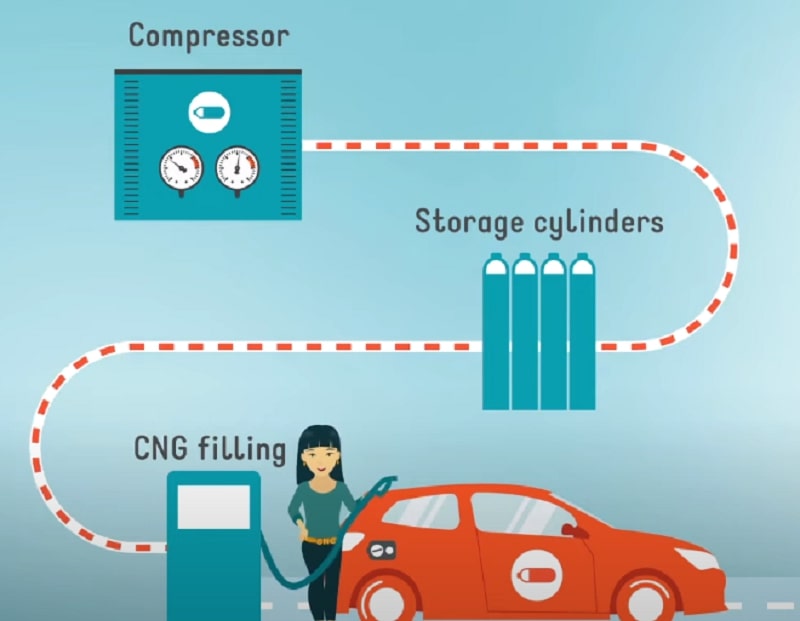
Once compressed, the CNG is stored in heavy-duty, high-pressure cylinders.
These cylinders are designed to safely contain the high-pressure gas and are constructed from materials capable of withstanding the rigorous demands of storing and transporting compressed gas.
Transportation to Refueling Stations
Transporting the compressed natural gas to refueling stations involves specialized containers and vehicles equipped to handle the high pressure.
The infrastructure for transporting CNG must be robust to maintain the integrity and safety of the gas from the point of compression to the point of end use.
The Distribution Network
The distribution requires a network of compression stations and filling stations that are capable of refueling vehicles.
Unlike gasoline or diesel, which can be transported easily across long distances, high-pressure requirement makes its distribution more complex.
- Pipeline systems are the most common method for transporting natural gas to and from compression stations.
- Refueling stations can be less common than traditional fuel stations, posing challenges for widespread adoption.
Common Infrastructure Challenges
While the benefits of Compressed Natural Gas are clear, there are significant challenges to scaling up its infrastructure.
The complexity and cost of the distribution networks can be significant barriers to its widespread adoption:
- Establishing a network of pipelines and refueling stations that can handle high-pressure gas is capital-intensive. The engineering challenges and safety standards required also contribute to higher costs.
- Refueling stations are currently less common than traditional fuel stations. This scarcity can deter consumers from choosing vehicles due to concerns about the availability of refueling options, particularly for long-distance travel or in rural areas.
- Efficient distribution also requires careful planning to position refueling stations strategically in locations that maximize accessibility for consumers while considering the availability of existing pipelines.
Need for Strategic Expansion
For CNG to become a more viable and widely adopted fuel alternative, significant investment in the expansion of the refueling infrastructure is necessary.
The expansion would involve not only building more stations but also enhancing the pipeline network to ensure a steady and reliable supply of compressed natural gas across various regions.
CNG in the Context of Renewable Energy
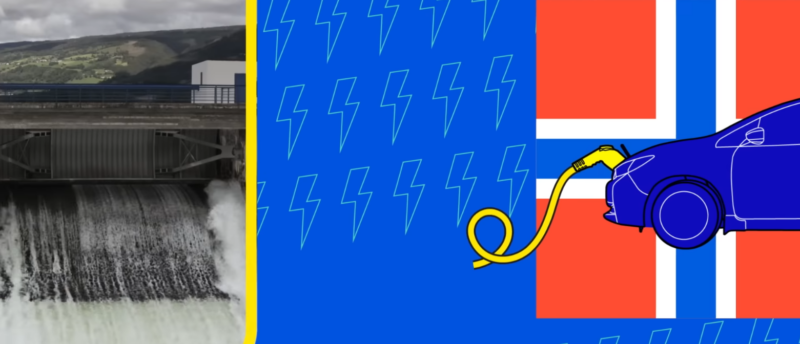
CNG is not just a bridge fuel but also a partner to renewable energy.
It has the potential to be produced from biogas, which is methane generated from organic waste decomposition.
This makes CNG part of a sustainable cycle that can reduce overall greenhouse gas emissions.
Biogas to CNG
One of the innovative approaches in sustainable energy is transforming biogas into CNG. Biogas is produced from organic waste materials through a process called anaerobic digestion, which breaks down organic matter in the absence of oxygen, producing methane-rich gas.
By capturing this methane, which would otherwise escape into the atmosphere as a potent greenhouse gas, and converting it into CNG, biogas becomes a valuable resource.
The process not only mitigates the release of methane into the atmosphere but also provides a renewable source of energy that can replace conventional natural gas in vehicles.
Renewable Natural Gas (RNG)
Renewable Natural Gas (RNG) is another key element in making consumption more sustainable.
RNG is produced from organic waste materials similar to biogas and is fully interchangeable with conventional natural gas.
The use of RNG contributes to a circular economy by utilizing waste from landfills, agricultural practices, and wastewater facilities, and converting it into a clean, usable energy form.
It reduces reliance on fossil natural gas extraction, lowers carbon emissions, and supports waste management.
Hybrid Systems
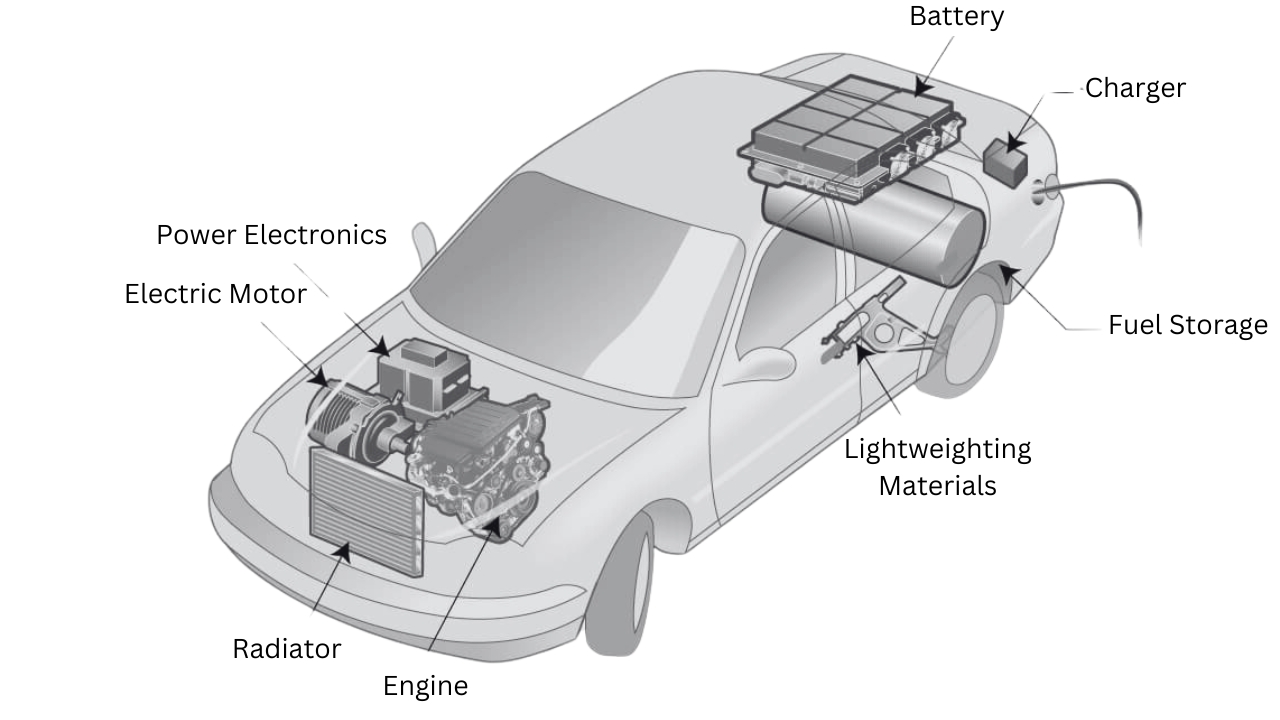
CNG is also being used in hybrid systems that combine the benefits of gas-powered and electric or hybrid vehicles.
These systems use CNG as a fuel in conjunction with electric power, resulting in highly efficient transportation solutions with reduced carbon emissions.
The dual system allows for extended range and reduced environmental impact, offering a practical solution to current limitations in battery technology and infrastructure for fully electric vehicles.
Additional Considerations
Implementing these systems effectively contributes to energy diversification, reduces environmental impact, and enhances sustainability by:
- Both biogas and RNG significantly cut the carbon footprint associated with vehicle fuels.
- Using organic waste to produce biogas and RNG turns what would be a disposal issue into an energy solution.
- By diversifying the energy mix and utilizing domestic resources, these solutions decrease dependence on imported fuels.
Compatibility with Existing Infrastructure
The integration of CNG into the current energy system is facilitated by its compatibility with existing infrastructure.
This compatibility allows for a more seamless transition as the energy sector evolves towards more sustainable practices.
- Pipelines can transport biomethane, which can be processed into CNG.
- CNG can be used for both transportation and electricity generation, providing flexibility in energy use.
- Utilizing existing infrastructure for CNG distribution minimizes the need for new investments.
Bridging the Gap to Future Energy Solutions
It stands at the intersection of present and future energy solutions.
It can serve as a lower-carbon alternative while the renewable energy infrastructure continues to grow and improve in efficiency and cost-effectiveness.
- Transition Fuel: CNG can be seen as a step toward a more renewable-heavy future, reducing emissions in the short term.
- Research and Development: Investment in related technologies can spur innovations that benefit broader renewable energy initiatives.
- Policy and Incentives: Support from governments and international bodies can facilitate the integration into a more sustainable energy mix.
Final Words
CNG emerges as a promising contender among alternative fuels. Its environmental advantages and potential economic benefits underscore its importance in the transition towards sustainable energy.
However, challenges in infrastructure and vehicle production must be addressed to fully realize its potential. It definitely can play a pivotal role in shaping a greener, more resilient future.



